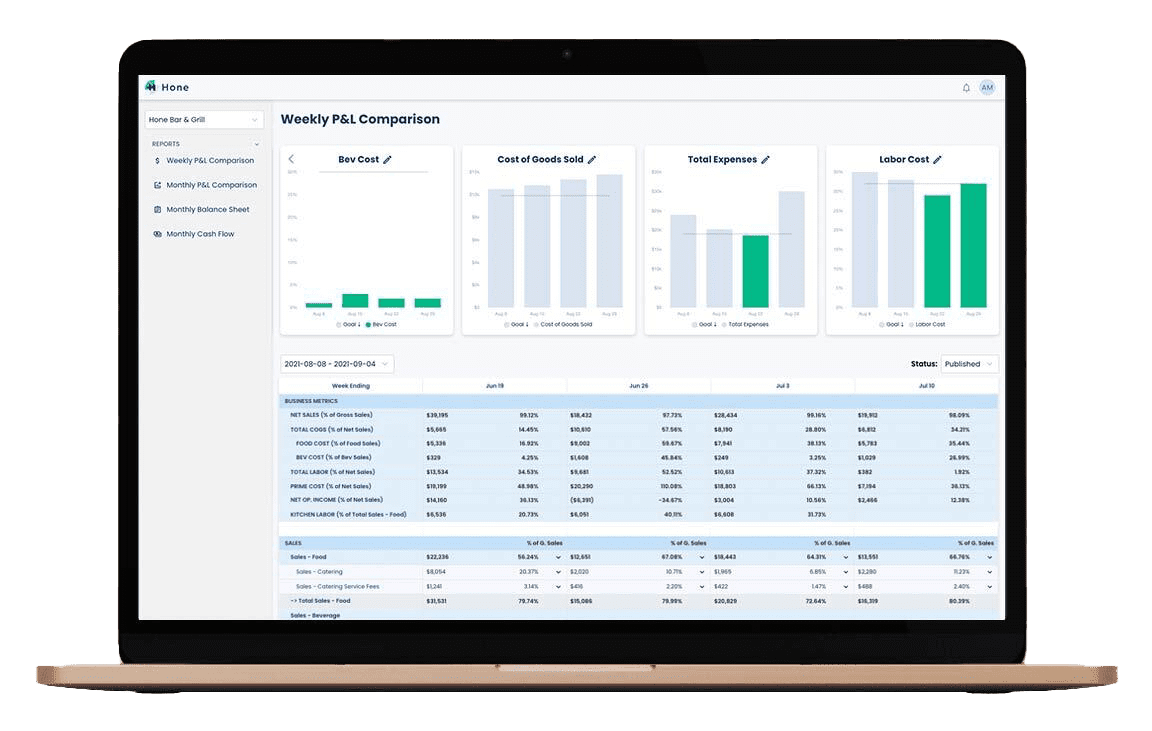Proper menu costing is essential for running a successful and profitable restaurant. Accurate pricing ensures that your menu items cover all costs while generating sufficient profit. In this guide, we will explore strategies to help you effectively cost your menu items, determine ideal pricing, consider market factors, and optimize your profitability. By implementing these strategies and utilizing technology, you can make informed pricing decisions that drive increased revenue and maximize your restaurant’s profitability.
What is Menu Costing?
Menu costing involves analyzing the expenses associated with each menu item, including the cost of ingredients, labor, overhead, and other operational costs. It aims to determine the ideal selling price that covers these costs while generating a desirable profit margin.
Read more about improving menu profitability and download a Google Sheets template in this related post
Assess Your Typical Sales and Expenses
To accurately cost your menu, start by analyzing your typical sales and expenses. Evaluate historical data, such as the volume of sales for each menu item, the frequency of ingredient purchases, and labor costs. This analysis provides insights into the costs associated with menu items and helps identify potential areas for cost reduction or pricing adjustments.
Find Your Ideal Food Cost Percentage
Determining an ideal food cost percentage is crucial for menu pricing. Food cost percentage is calculated by dividing the cost of ingredients by the menu item’s selling price and multiplying by 100. Research industry benchmarks and consider factors such as your restaurant type, location, and target market to establish a target food cost percentage. Strive to achieve a balance between competitive pricing and maintaining profitability.

Consider Your Ideal Gross Profit Margin
In addition to food cost percentage, evaluate your ideal gross profit margin. Gross profit margin is the difference between the selling price and the cost of goods sold, expressed as a percentage of sales. Analyze your financial goals and market positioning to determine an appropriate gross profit margin that aligns with your restaurant’s objectives.
Look at Your Competitors’ Pricing
Researching your competitors’ pricing can provide valuable insights into market trends and customer expectations. Compare your menu prices with those of similar establishments in your area. While it’s essential to be competitive, be mindful of the unique value and quality you offer. Differentiate your menu items based on factors such as ingredient quality, portion sizes, and unique flavor profiles.
Take Customer Demand Into Account
Consider customer demand when pricing your menu items. Evaluate popular dishes, customer preferences, and the perceived value of each item. Conduct surveys or gather feedback to understand which items customers are willing to pay a premium for and which may require lower pricing to remain competitive.
Don’t Forget Your Differentiators
Highlight your restaurant’s unique selling points and differentiators when pricing your menu items. If you offer specialty ingredients, locally sourced produce, or signature dishes, factor in the added value they bring to the customer experience. Adjust pricing accordingly to reflect the quality and exclusivity of these offerings.
Seek Ways to Lower Food Expenses
Lowering food expenses is a key strategy for increasing profitability. Explore cost-saving measures such as negotiating better prices with suppliers, reducing food waste through effective inventory management, and optimizing portion sizes to minimize ingredient usage. Regularly review your menu to identify items with low profitability and consider alternatives or pricing adjustments.
Use Technology for More Accurate Menu Pricing
Leverage technology solutions to streamline menu costing and pricing. Utilize restaurant management software that integrates inventory management, recipe costing, and menu analysis features. These tools provide real-time data, automate calculations, and generate reports that help you make data-driven pricing decisions.
Get Help Making Your Restaurant More Profitable
Managing menu costing and pricing can be complex. Seeking professional assistance can help you optimize profitability. Contact Hone below for a free consultation. We will walk you through the menu pricing calculator and also talk about other ways that we help our restaurants improve their profit margins through our restaurant bookkeeping software designed specifically with your needs in mind.



